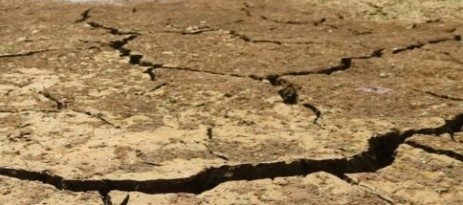
STRATEGIC ASSESSMENT. Afghanistan is now grappling with one of the highest levels of acute food insecurity in the world. Nearly 23 million people, about 55 percent of the population, are facing emergency levels of food insecurity this winter—9 million of whom are on the verge of starvation. In the three months since the U.S. withdrew and the Taliban seized control of Afghanistan, humanitarian conditions in an already grim context have worsened, as a drought has ravaged the agricultural sector with no end in sight. Approximately half the population was already in need of assistance as of mid-2021, but now, with challenges compounded by the drought, insecurity, and ineffective social services, the humanitarian crisis has reached a new high. An estimated 3.2 million children are at risk of acute malnutrition.
Agriculture is a critical pillar of not just the Afghan economy, but also livelihoods and the food supply; approximately 80 percent of Afghans’ livelihoods are tied directly or indirectly to agriculture, according to the UN Food and Agriculture Organization (FAO). Likewise, at least 25 percent of the country’s gross domestic product (GDP) relies on the agriculture sector. Displacement tied to insecurity and inadequate harvests all but ensure civilians’ inconsistent access to food and livelihoods. In addition to the 3.5 million Afghans previously internally displaced, approximately 550,000 Afghans have been displaced thus far in 2021. Even before the Taliban seized control, Afghanistan was ranked 99th out of 107 countries assessed in the 2020 Global Hunger Index, and one-third of the population was already food insecure.
As the Taliban have executed broader geographical control, humanitarian access has actually improved. Whereas the FAO could only safely access 25 provinces earlier this year, the organization can now operate in all 34 provinces. Nonetheless, economic and fiscal obstacles have paralyzed humanitarian assistance. Whereas the prior Afghan government was largely reliant on international aid, the Taliban have seen aid and international funding frozen, exacerbating an economic crisis and stoking hyperinflation. The U.S. froze $9.5 billion in Afghan government assets, and sanctions are halting banking services, money transfers, and cash access, to detrimental effect for civilians and aid operations. International sanctions targeting the Taliban have the unintended side effect of significantly contributing to the liquidity crisis and inflation affecting inadequate food access. International Committee of the Red Cross (ICRC) director of operations Dominik Stillhart recently shared his disappointment that, “Economic sanctions meant to punish those in power in Kabul are instead freezing millions of people across Afghanistan out of the basics they need to survive.” The currency value has dropped about 18% in the past year, and the Taliban is unable to pay wages to civil servants. Given the scale of inflation combined with food scarcity, food baskets now cost at least 82 percent of the average household income in Afghanistan, according to the UN United Nations Office for the Coordination of Humanitarian Affairs (OCHA).
Significant to both human security and human rights in Afghanistan, the international community is also watching closely the gender implications of renewed Taliban leadership. Despite the Taliban’s assurances to the contrary, UN Human Rights Chief Michelle Bachelet stated that “women have instead [recently] been progressively excluded from the public sphere” in Afghanistan. Some aid organizations have also reported imposed limitations on cash assistance to women-headed households. Such policies have significant implications for the staffing capacity for the delivery of humanitarian assistance, as well; while de facto authorities have provided some guidance on certain conditions for the participation of women in aid work, safe implementation therein remains to be seen.
Despite an international pledging conference in September that raised over $1 billion in aid to Afghanistan, $200 million per month will be required for the food aid alone through March 2022. Compounding humanitarian challenges, competition between the Taliban and Islamic State Khorasan (IS-K) for influence and control further imperils the security environment. Moreover, the Taliban’s longstanding relationship with al-Qaeda bodes poorly for civilian security, with many concerned about the prospect for a renewed safe haven to the group in Afghanistan. To first address the most immediate life-threatening humanitarian imperatives, the international community must act quickly to eliminate obstacles to humanitarian assistance to prevent mass starvation and further mass displacement. UN World Food Programme (WFP) Executive Director David Beasley has recommended that states reallocate funding from development assistance to emergency aid and direct frozen funds through UN humanitarian agencies. U.S. and UN terrorist designations do not carry a humanitarian exception, and despite the Biden administration issuing two “general licenses” in September to try to lessen the negative sanctions impact, risk aversion in the banking sector limits the impact of such a stop-gap measure. Mr. Stillhart of the ICRC drove home the central, and rectifiable, concern: “The international community is turning its back as the country teeters on the precipice of man-made catastrophe.”






